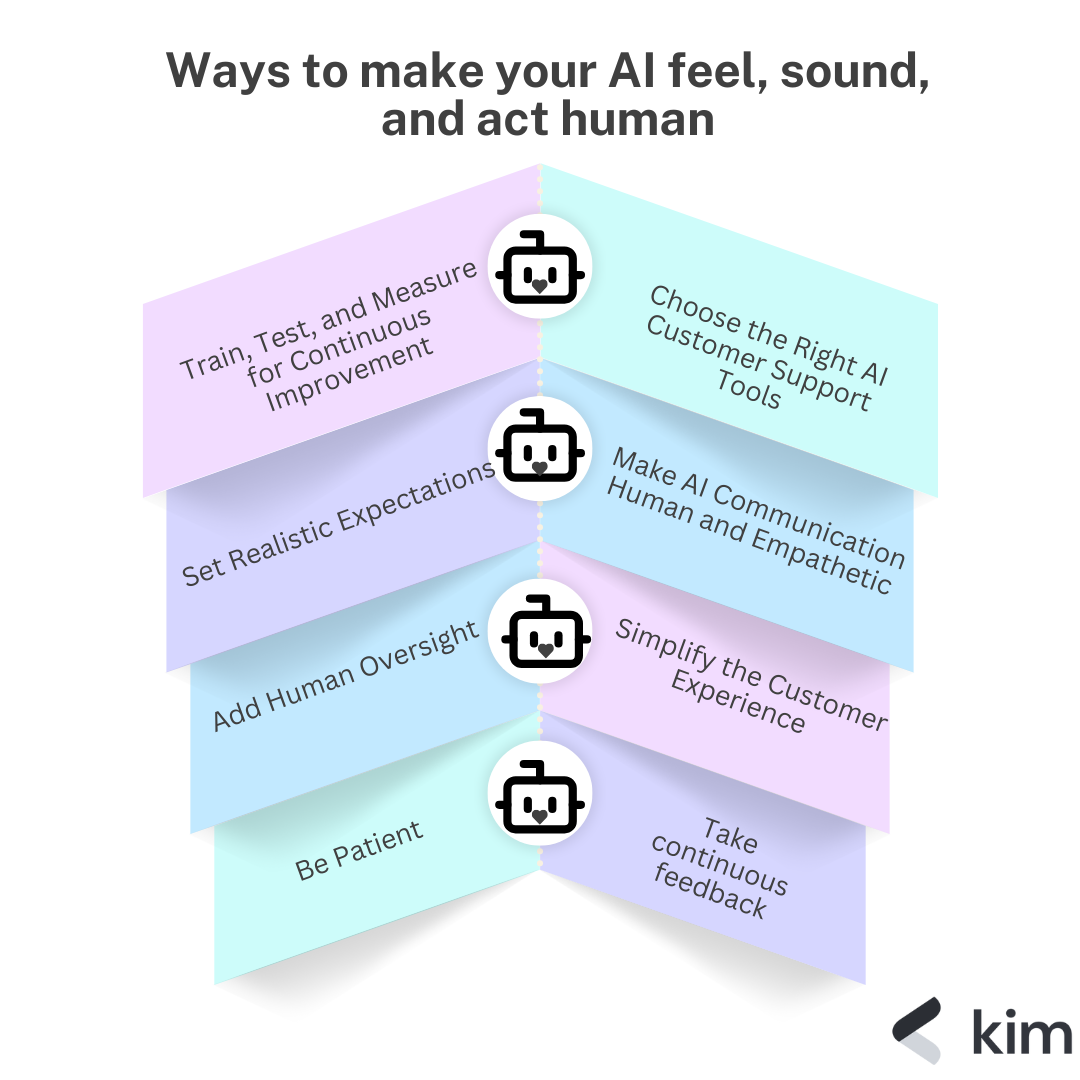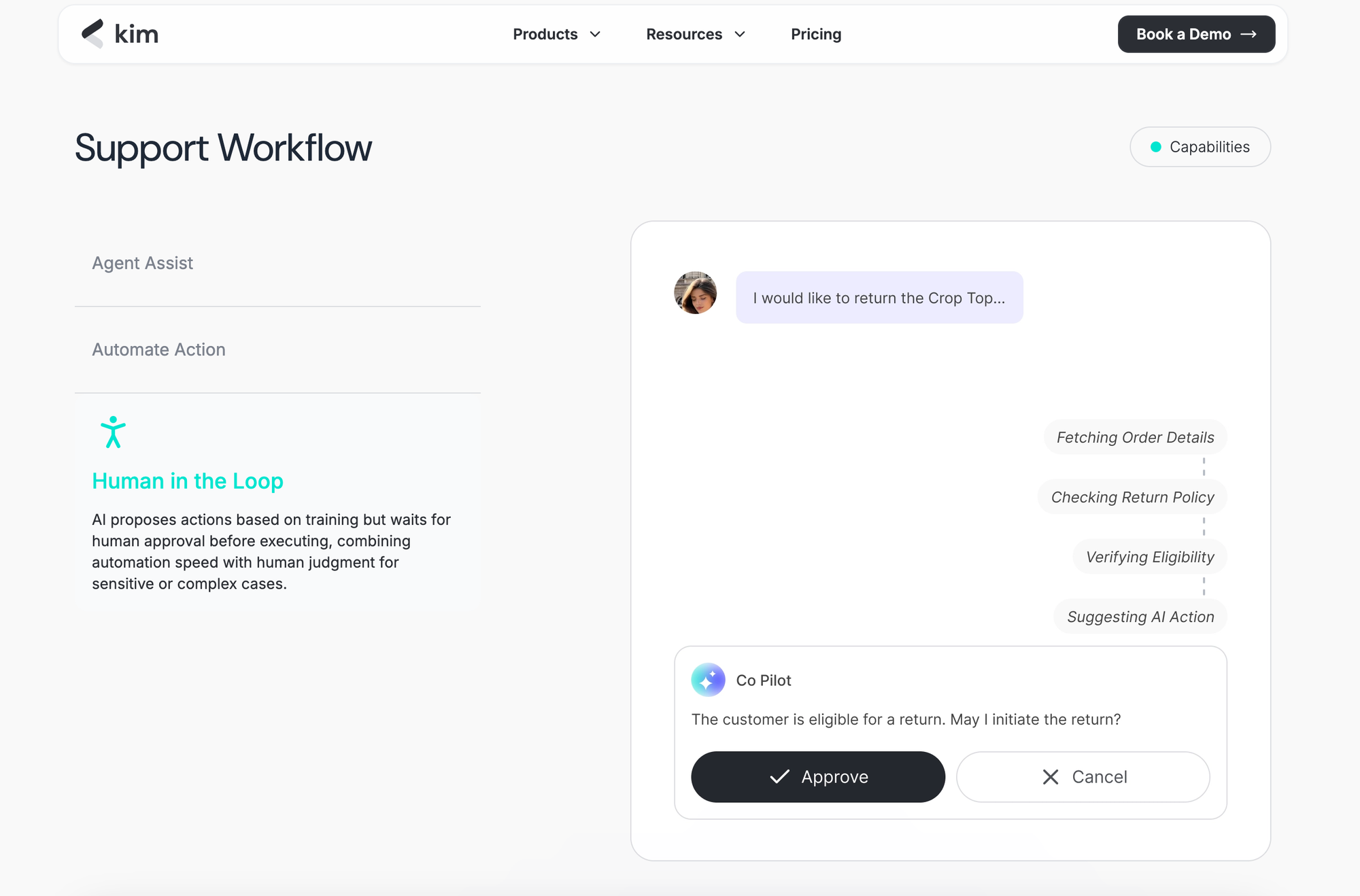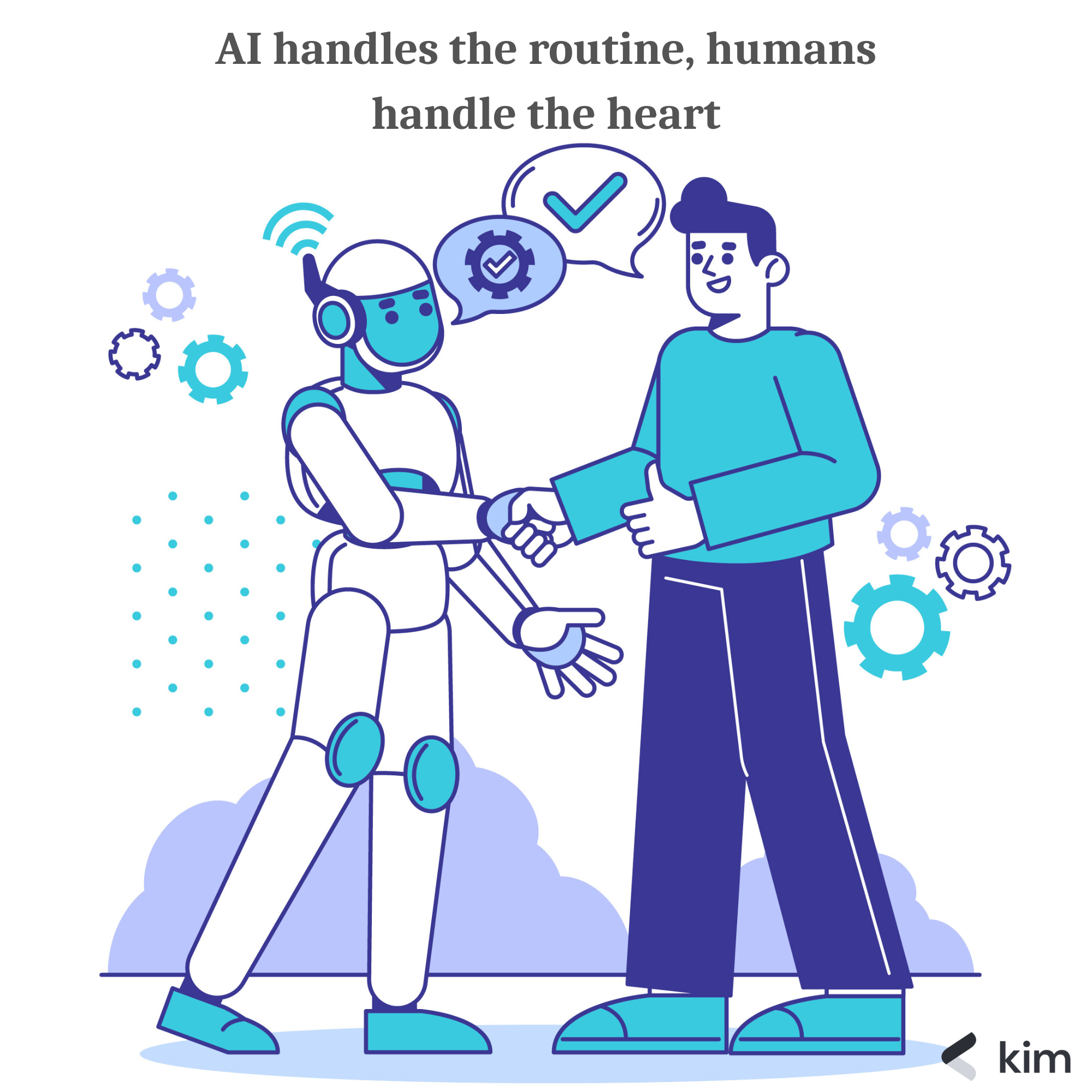AI Customer Support: Building Trust with a Human-Centered Approach (2025 Guide)
“Would you trust a robot with your refund?” That’s the question on most customers’ minds, even if they don’t phrase it that way. Nobody wakes up wanting to fight with a chatbot. When customers reach out, it’s rarely about something complex. They just want to know: When will I get my refund? Where’s my order? Why hasn’t this been updated yet?
And yet, these simple questions often land them in long queues, waiting for a human while an AI bot spits out clunky, irrelevant responses.
For founders and support leaders, this isn’t sustainable. Customers expect speed, scale, and accuracy, but more importantly, they want confidence in the support experience. And confidence isn’t built by technology alone. It comes from clarity, consistency, and empathy.

In 2025, the companies that win won’t be the ones with the “smartest” AI bots, but the ones using AI-powered customer support to feel, sound, and act human.
Here’s how to get it right.

1) Simplify the Customer Experience with AI Support
Customers don’t want to jump through hoops for basic queries. If your AI help desk tries to do too much too soon, it risks confusing or frustrating users. Instead, start simple:
- Focus on the essentials: refunds, order tracking, password resets.
- Automate the repetitive: FAQs, shipping updates, appointment confirmations.
- Route complexity wisely: Escalate edge cases to human agents.
When AI handles the basics flawlessly, customers gain confidence and are more open to automation for more complex needs.
According to Zendesk’s 2025 CX Report, 67% of customers say they are more likely to trust AI if it consistently resolves simple queries correctly.
Shopify used this approach effectively. By focusing AI on refunds and shipping updates first, they built customer trust step by step, eventually scaling automation to manage higher-value support while freeing up human agents for strategic tasks.
2) Add Human Oversight to Strengthen Trust
No matter how advanced AI becomes, customers want to know there’s a human behind the screen.
A human-in-the-loop model, where AI drafts responses but humans review or step in for sensitive cases, strikes the right balance:
- Humans verify sensitive interactions like refunds, cancellations, or disputes.
- AI learns continuously from human feedback, improving accuracy and empathy.
- Customers feel supported knowing they can reach a person when it matters.

Airbnb exemplifies this approach. Their AI processes thousands of queries daily, but human oversight is built into workflows for cancellations, safety issues, or financial disputes. This ensures scalability without sacrificing trust.
3) Set Realistic Expectations for AI Customer Support
One of the fastest ways to erode trust? Overpromising.
Don’t claim your AI can “do everything.” Instead, communicate clearly:
- What the AI handles well (refund timelines, password resets, status updates).
- When and how humans will step in (billing disputes, escalations, technical issues).
- How fast customers can expect resolution in each case.
Salesforce’s 2025 Customer Trust Report found that 73% of customers value transparency about AI limitations more than speed. In other words, honesty buys more goodwill than flashy promises.
Companies that set expectations upfront not only reduce frustration but also increase customer willingness to engage with AI-powered support.
4) Make AI Communication Human and Empathetic
Even if your AI help desk resolves an issue quickly, a robotic tone can alienate customers. Empathy makes the difference.
With advanced natural language processing (NLP), you can train AI to:
- Use empathetic phrasing (“I understand this refund is important to you”).
- Mirror the tone of your best human agents.
- Avoid rigid, scripted responses that feel mechanical.
For example:
- Robotic: “Refund processed in 3–5 business days.”
- Human-centered: “I understand how important this refund is for you. It will be processed within 3–5 business days, and we’ll keep you updated.”
5) Choose the Right AI Customer Support Tools
The wrong platform can undo all your efforts. When selecting an AI-powered customer support solution, evaluate tools on criteria beyond “smart replies”:
- Integration – Does it connect seamlessly with your CRM, ticketing, and communication tools?
- NLP Quality – Can it understand context, intent, and nuances?
- Security & Compliance – Does it meet GDPR, HIPAA, or industry-specific standards?
- Scalability – Can it handle spikes in demand during seasonal peaks?
- Customization – Can it adapt responses to match your brand’s voice and tone?
- Analytics & Reporting – Does it provide insight into performance, customer satisfaction, and areas to improve?
6) Train, Test, and Measure for Continuous Improvement
AI customer support isn’t a “set it and forget it” system. To build trust over time, companies must:
- Train AI regularly with updated datasets reflecting real customer queries.
- Test conversational flows to catch gaps or confusing loops.
- Measure performance with KPIs like CSAT (customer satisfaction), FRT (first response time), and AHT (average handle time).
- Gather customer feedback on AI interactions and refine accordingly.
7) Be Patient: Trust in AI Support Grows Over Time
AI adoption is not a transaction, it’s a relationship. Customers won’t trust your AI on day one. Trust builds through consistency, reliability, and transparency.
McKinsey’s 2025 research found companies that scaled AI gradually with human oversight achieved:
- 40% lower support costs within 18 months.
- Higher trust scores compared to companies that tried to fully automate immediately.
Patience, combined with the right strategy, ensures long-term success.
Wrapping Up: Human First, AI Second
AI in customer support isn’t about replacing humans, it’s about empowering them. Customers want faster answers, yes, but they also want assurance that a human is there if needed.
The winning formula is simple: simplify experiences, add human oversight, set realistic expectations, design empathetic AI, choose tools carefully, and commit to continuous improvement. Done right, AI won’t feel robotic, it will feel like a natural extension of your people.
Ready to scale your customer support without losing the human touch?
